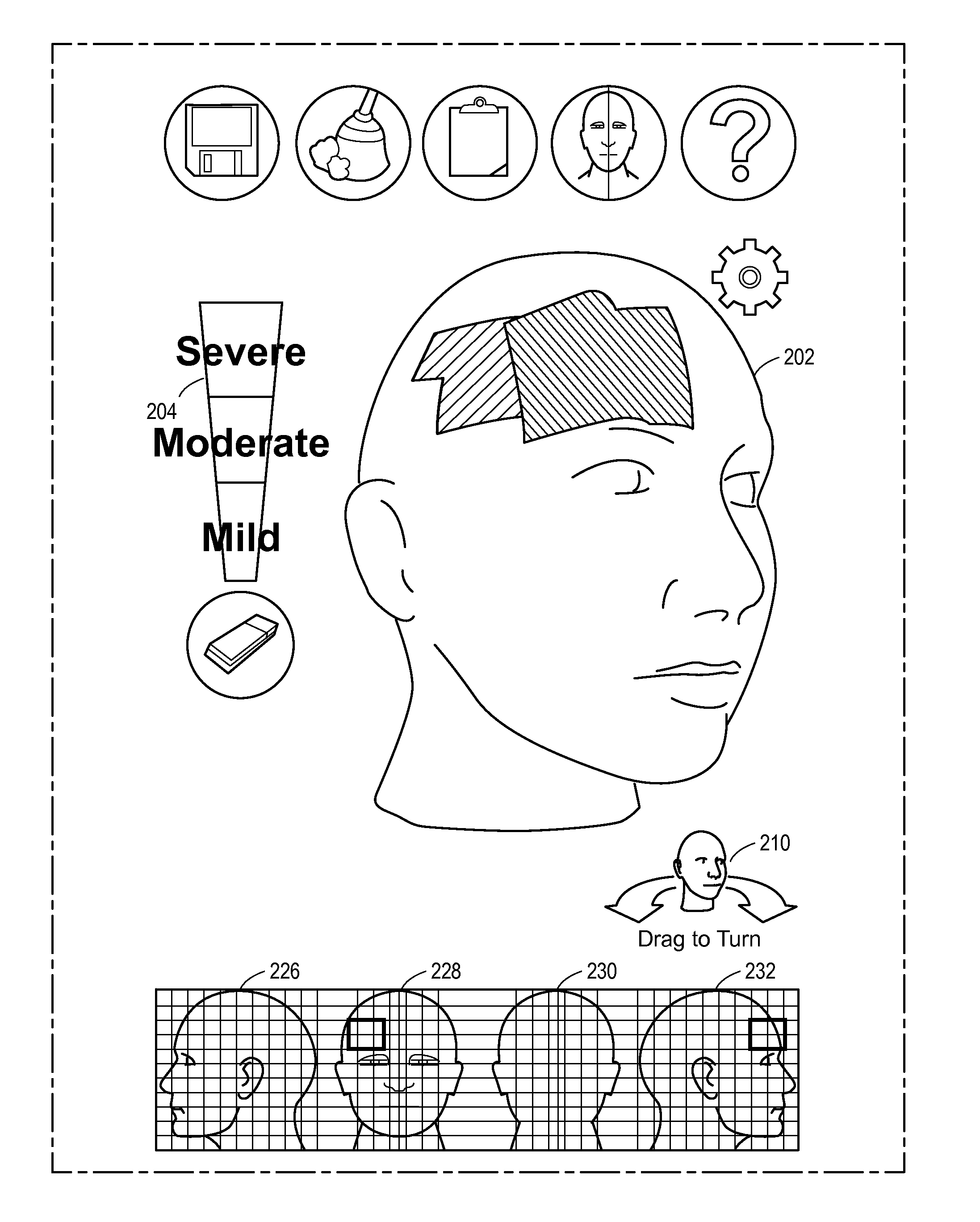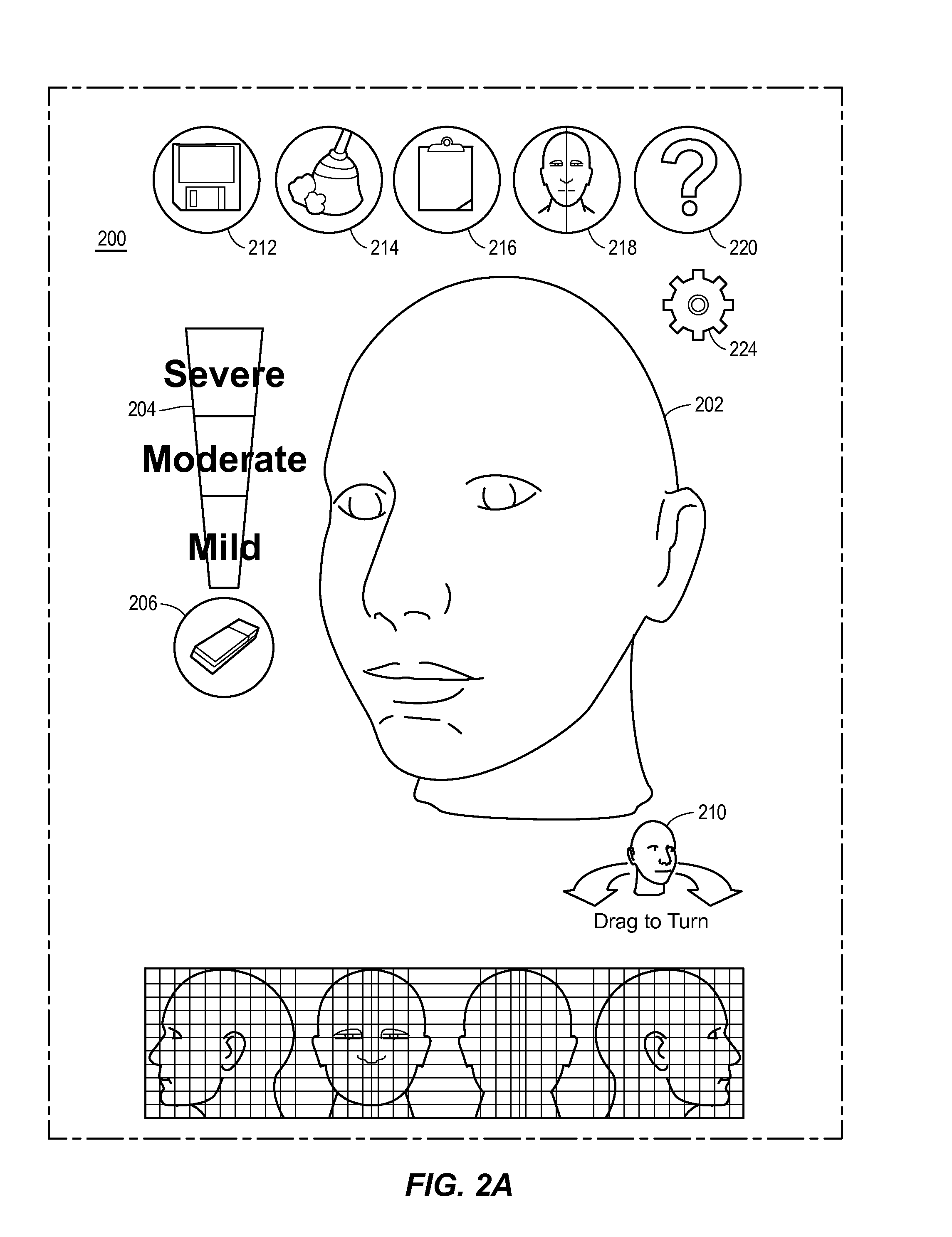Pain surveying and visualization in a human bodily region
a human body and pain technology, applied in the field of measuring pain, can solve the problems of difficult for physicians and researchers to assess the effectiveness of pain treatment, debilitating pain for patients and physicians, and limited observational data and physiological data,
- Summary
- Abstract
- Description
- Claims
- Application Information
AI Technical Summary
Benefits of technology
Problems solved by technology
Method used
Image
Examples
experiment 1
[0078
[0079]The aggregation techniques were applied in an example experiment to assess pain onset. In particular the techniques were used to evaluate, in vivo, the μ-opioid system during spontaneous episodic migraine headaches. Patients were scanned at different phases of their migraine using Positron Emission Tomography (PET) with the selective μ-opioid receptor (μOR) radiotracer [11C] carfentanil. We determined that, in the ictal phase, there was μOR activation in the medial prefrontal cortex, which was strongly associated with the μOR availability level during the interictal phase. Furthermore, μ-opioid binding changes showed moderate negative correlation with the combined extension and severity of the attacks. These results indicated for the first time that there is high μOR activation in the migraineurs' brains during headache attacks in response to their pain.
[0080]Patients with chronic migraines routinely use opioids for treatment. Although the endogenous opioid system has lon...
experiment 2
[0092
[0093]The use of opioids in clinical practice is not without risk of undesired effects, especially in migraine patients where the recurrent nature of the attacks, and consequently the frequent use of rescue opioid intake, can severely increase the risk of chronification and even allodynia. This augmented cutaneous sensitivity to stimuli that should not cause pain, already present in 65% of migraineurs, turns mundane activities such as washing the face with hot water and combing the hair into distressing tasks during the headache attacks. In Experiment 1, we demonstrated that there was an ineffective high release of endogenous μ-opioids at the cortical level to fight the ongoing migraine pain. More precisely, this was noted in the medial prefrontal cortex (mPFC), a cortical area that processes the spatio-temporal and cognitive-emotional inputs related to spontaneous chronic clinical pain.
[0094]In this experiment, Experiment 2, we seek further information regarding the involvemen...
PUM
 Login to View More
Login to View More Abstract
Description
Claims
Application Information
 Login to View More
Login to View More - R&D
- Intellectual Property
- Life Sciences
- Materials
- Tech Scout
- Unparalleled Data Quality
- Higher Quality Content
- 60% Fewer Hallucinations
Browse by: Latest US Patents, China's latest patents, Technical Efficacy Thesaurus, Application Domain, Technology Topic, Popular Technical Reports.
© 2025 PatSnap. All rights reserved.Legal|Privacy policy|Modern Slavery Act Transparency Statement|Sitemap|About US| Contact US: help@patsnap.com



